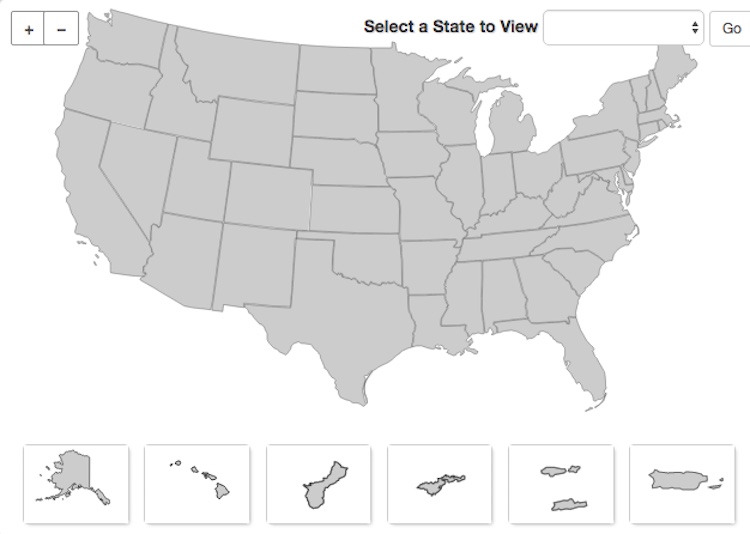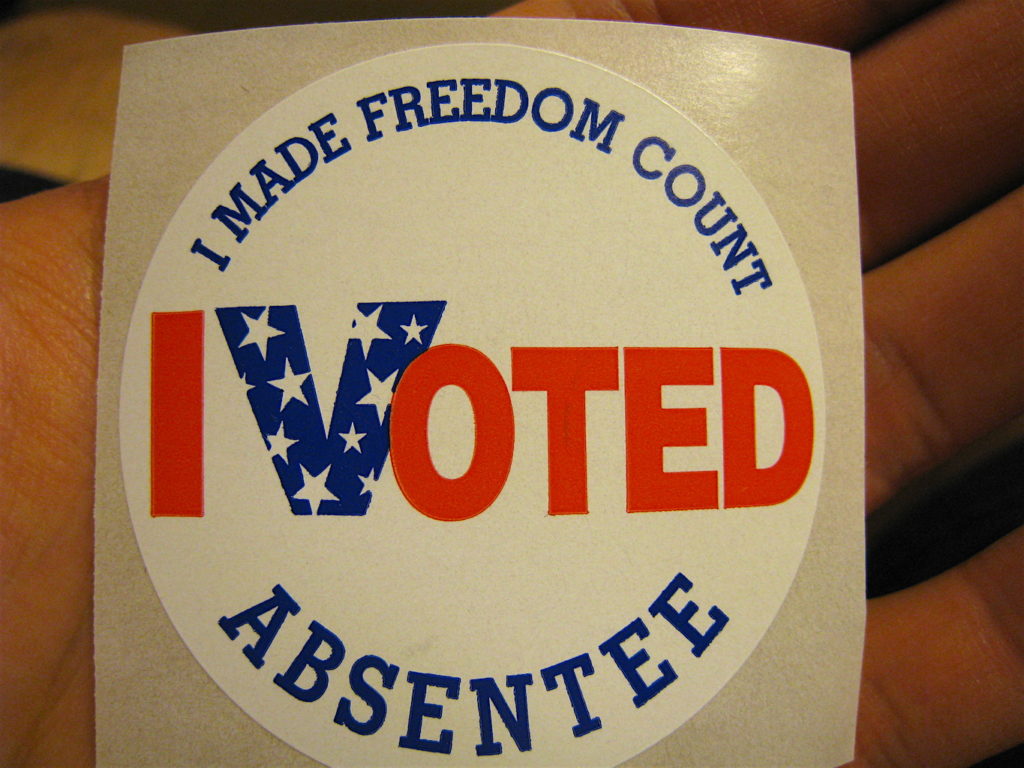Absentee Voting – we provide a guide for U.S. citizens to absentee vote in U.S. elections including the upcoming U.S. presidential election from Colombia.
Voting is one of the most fundamental rights of U.S. citizens. The upcoming 2020 U.S. Presidential Election is on November 3, 2020. This will be the 59th quadrennial presidential election. And U.S. citizens are permitted to vote in the U.S. even if they no longer reside in the U.S.
Several Medellin Guru readers over the past two months using the contact page on this website asked about absentee voting and how U.S. citizens can absentee vote from Colombia. So, we now provide a guide for U.S. Citizens to absentee vote from Colombia.
Federal elections in the U.S. are managed individually by 50 States and the District of Columbia. This means there are 51 different sets of rules for absentee voting for Federal elections by Service members, their eligible family members and overseas U.S. citizens, but the basic steps are simple:
- Register to vote and request an absentee ballot by filling out a Federal Post Card Application (FPCA) and send it to your election office in your State or District of Colombia.
- Election office approves the FPCA, disapproves the FPCA or requests additional information.
- Once the FPCA is approved, the election office sends you an absentee ballot by a date determined for each state or District of Colombia.
- You complete and return your voted absentee ballot.
We now look at each of these steps in detail.
1. Request an Absentee Ballot with a Federal Post Card Application (FPCA)
The Federal Post Card Application (FPCA) is found online in PDF format. Or better there is an FPCA online tool where you answer required questions and the tool fills in the FPCA accurately, which you can print out.
It is recommended you send in a new FPCA every January and every time you move. An FPCA should be submitted at least 90 days before the election in which you want to vote.
The FPCA application includes the following sections:
- Section 1 – Name, date of birth and Social Security or State-issued ID number
- Section 2 – Street address of your last voting residence where you are registering to vote and requesting an absentee ballot. This cannot be a PO box. This voting residence is the last address where you lived in the U.S. and you don’t have to live there.
- Section 3 – Your current mailing address, even if you are requesting your ballot by email/online or fax.
- Section 4 – Your contact information if an election official needs to contact you. Also, if you want to receive your absentee ballot by email/online you must provide your email address.
- Section 5 – You can receive your voting materials by mail or email/online, select your preferred method of receiving your ballot.
- Section 6 – Provide information to assist election official in accepting the form. You can use this space to choose particular elections or the period you wish to receive ballots.
- Section 7 – Sign and date the form.
The mailing addresses, email addresses and fax numbers of election offices in your state or District of Colombia are found on the Federal Voting Assistance Program (FVAP) website guide.

Clickable map is found on the FVAP website guide with detailed absentee voting instructions for each state
Mail your FPCA: Mail your FPCA directly to your election official. Every state and the District of Colombia accepts the FPCA via mail.
Email your FPCA: Scan the signed FPCA into your computer and send via email. Be sure to also include the “Transmission Cover Sheet“.
Fax your FPCA: Fax your FPCA directly to your election official. Be sure to also include the “Transmission Cover Sheet“.
As seen in the following table, there are four states that won’t accept a FPCA via email or fax: Alabama, Arkansas, Connecticut and Wisconsin. For these four states you will have to mail the FPCA to your appropriate election office.

States that accept email or FAX for submitting FPCA, source FVAP
2. Election Office Approves or Disapproves the FPCA
The Election Office in the U.S. either approves or disapproved the FPCA or may request additional information.
In addition, you can contact the Election Office where you sent the FPCA to find out the status, which are found in the FVAP website guide.
If registration of the FPCA is successful, you will be contacted and an absentee ballot requested.
3. Absentee Ballot is Sent to You
U.S. citizens can receive their blank absentee ballots electronically or via mail. Depending on the state in which you are eligible to vote, you may get your ballot by email, fax, or Internet download or by mail.
You can request that an absentee ballot is sent to you electronically when you submit your FPCA. Election officials are required to send absentee ballots at least 45 days before a general election.
If you requested a ballot electronically, you should receive it at least 45 days before a federal election. If you have the ballot sent via mail, ballots can take longer to arrive depending on the postal system. We recommend not sending absentee ballots via the postal system to Colombia. It is much faster and easier to send the ballot to you electronically.
4. Complete and Return Your Absentee Ballot
After receiving your absentee ballot, you typically have 45 days or less to return your voted ballot.
Unfortunately, 22 of the states in the U.S. do not accept absentee ballots that are emailed, faxed or sent online, as seen in the following table.

States that accept email, FAX or online for submitting absentee ballots, source FVAP
The above table also includes the absentee ballot return dates for the U.S. November 3, 2020 Presidential Election.
There is a complete list of election office addresses, emails and fax numbers for your State, U.S. territory or District of Colombia found on the Federal Voting Assistance Program (FVAP) website guide.
If your state is one of the 22 that does not accept email, fax or online submittal of an absentee ballot you will have to physically mail the ballot to the election office where you submitted the FPCA form.
Mailing to the U.S. from Colombia can be unreliable. So, we recommend using a service like FedEx of DHL if you have to mail your absentee ballot.
Also, you can drop off a ballot at the U.S. Embassy in Bogotá (allow 2-3 week for delivery) or U.S. Consulate in Barranquilla. (allow 4 to 6 weeks for delivery). The voting materials’ envelope must be addressed to your local election officials and have sufficient postage or be in a postage-paid envelope. A postage-paid envelope is available on the FVAP website.
5. Use a Federal Write-in Absentee Ballot as a Backup for Absentee Voting
If you haven’t received your blank absentee ballot 30 days before an election, don’t wait any longer and use the Federal Write-In Absentee Ballot (FWAB). The FWAB is an emergency backup ballot.
This backup ballot can be completed using the FWAB online assistant, by filling out the PDF or picking up a hard copy version from your nearest U.S. embassy or consulate.
The online assistant will guide you through the process of completing the form. Once you complete the form, you will be able to download and print the PDF package to sign and send to your election office, which are found on the FVAP website guide.
A FWAB will be counted only if your regular ballot doesn’t reach your local election officials by your state’s deadline. Following this emergency procedure will not invalidate your vote or result in two votes being cast.

Absentee voting, photo by JCTennis.com
The Bottom Line: Absentee Voting – Guide for U.S. Citizens to Absentee Vote from Colombia
It is possible for U.S. citizens in Colombia to absentee vote in the upcoming U.S. presidential election in November 2020. The above guide shows the process for absentee voting and we recommend requesting your absentee ballot at least 90 days before the election.
More than half the states in the U.S. make absentee voting easy with electronic applications for an absentee ballot and voters being able to submit ballots electronically.
In addition, election analytics website FiveThirtyEight identifies the states of Colorado, Florida, Iowa, Michigan, Minnesota, Ohio, Nevada, New Hampshire, North Carolina, Pennsylvania, Virginia and Wisconsin as perennial swing states.
Each of these swing states have seen close elections over the past few presidential elections. So, your absentee vote really can count if you are from one of these swing states.
Sign up for the Free Medellin Guru Newsletter – You can see all of the previous Medellin Guru weekly email newsletters and sign up here.

